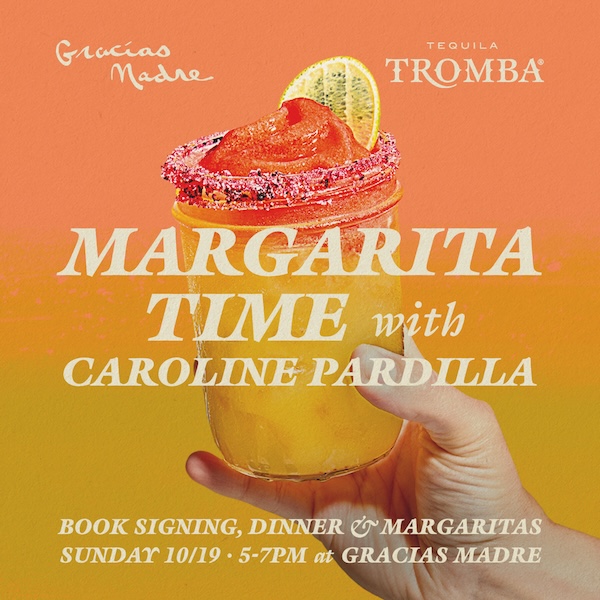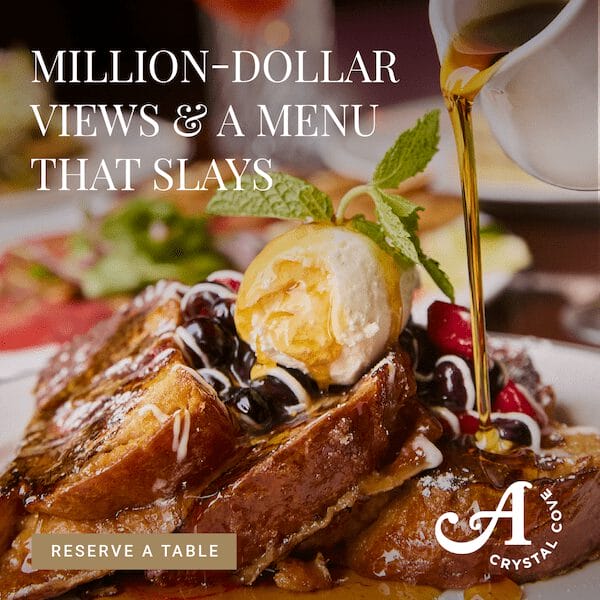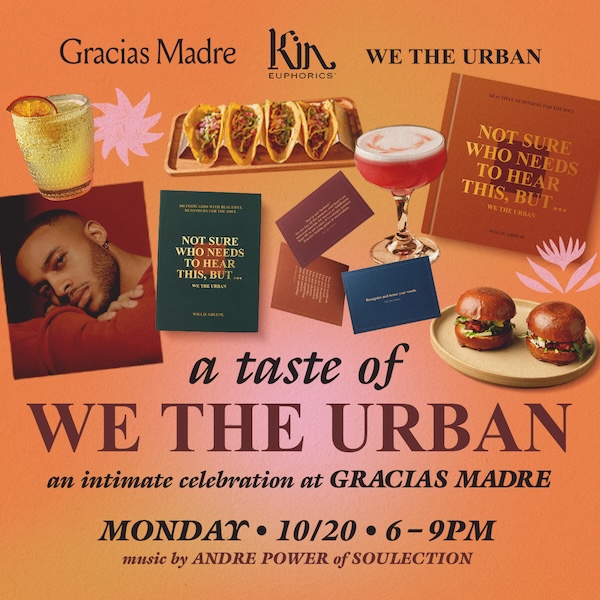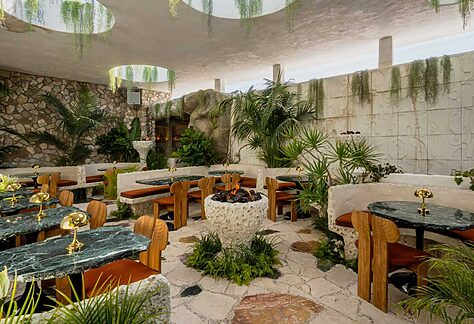What It’s Like to Work as a Traveling Private Sushi Chef from OC to LA
The Expert: Kenji Jampathong
Credentials: Private Sushi Chef
Raw Review: Chef Kenji worked an event for the 2015 Emmys with 4, 000 guests
Chef Kenji Jampathong took an unorthodox route to becoming an acclaimed sushi chef. He first pursued computer science as his field of study. On the side, he worked at various restaurants cultivating the passion that would soon define his career. When he finally traded in circuit boards and microchips for cutting boards and knives, he was still developing his craft. But after years of working under various sushi masters, Chef Kenji has become a sushi master in his own right. Today, he is sought out for a wide variety of events ranging from high profile celebrity dinners in Hollywood to small parties in family homes to large corporate events. What elevates Chef Kenji above his contemporaries is the way he takes traditional sushi elements and uses them to create plates and combinations of flavors you won’t see in your neighborhood sushi restaurant. A menu can include anything from seared ocean trout to venison sushi to Wagyu beef carpaccio. Chef Kenji’s sushi is reimagined and redefined; it’s art in its own right.
Q: How did you come to have such a passion for cooking?
Kenji Jampathong: Well, it’s an obsession now. It started out with my parents. My dad was in the army and we hosted a lot of dinner parties for my dad’s friends.
Q: Where did you start your culinary career?
KT: Tony Roma’s [chuckles]. Then I moved to a Japanese restaurant and then on to Benihana’s. Then my plans changed and I started working on my degrees. I got my AA in Palm Desert and then moved to UCI and got a degree in computer science. Once I graduated, I got a job at a database company for automotive manufacturers but on the weekends I was still doing sushi. I was working in restaurants anywhere I could and soon it became obvious that I loved doing this more than my career. So, after six years in my professional career, I left my job and decided to run a sushi restaurant. I built it from the ground up as a manager and head sushi chef. Then a sushi chef offered me an unpaid internship to study and learn sushi more formally. Once the internship was over, my mom and my sister were moving to Las Vegas so I decided to move with them. I went to the Aria and auditioned for a job at Bar Masa run by Masa Takayama. In the end, he offered me a job but at his new restaurant in New York City. It was a dream job but I had to turn it down because my mom was sick and I didn’t want to leave the West Coast. I bounced around to other sushi restaurants learning a little bit more from everywhere I worked while sushi became more of an obsession. I’m always looking to improve and cook from the heart.
Q: Why sushi?
KT: I started out in teppanyaki but I liked the fish and the craftsmanship of sushi better; you have to be delicate, everything has to be an art form and you have to respect the ingredients. Of course, if my clients want other types of food, I can do those too. In the end, it’s really all about good quality and delivering the best. Whatever you can dream up, we can deliver.
Q: Describe your typical celebrity client and what it’s like to create for them.
KT: We have many celebs and entertainers in the music business that are well known that you see on social media or at the Grammys, Emmys, on TV shows and in movies. Creating food for celebs is more challenging—we have to use our creativity and experience to figure out what they like, as we don’t have direct communication with the celebs. We have to go through the assistants or the person in charge of the events. Over time it becomes more natural and we just go with what we feel will best match the event.
Q:Why does your work attract such high-profile clients?
KT: Quality ingredients, custom menu, craftsmanship, attention to detail, presentation, professionalism, one of a kind creations, dedication to bringing long-lasting memorable experiences, passion. We take great pride in our work and have a desire for excellence. We’re always coming up with new ideas and creations so our regular clients always have new things to try. We take input from the clients and ask them what they would like us to create based on their vision of the event, then we transform their vision into reality with our own style of sushi and cooked dishes.
Q: What is it like to work a large, high visibility event like the Emmys?
KT: I worked at the Emmys in 2015. I have a great friend who is the sushi ambassador for Patina and he does a lot of larger events. I worked with him on the side so he asked me to help prepare this event for 4, 000 guests. They had their regular staff for plating but really wanted a sushi chef to review the presentation. I loved it; I made sure every plate was perfect.
Q: Do you prefer to work small, private events or larger, public events? Why?
KT: My ideal event would be 50 people for a high-end event and premium experience. At that size, that’s where we bring the best experience. However, I can do anything. My main business is 30-40 people with 9-10 courses combining sushi and cooked food plates.
Q: How do you find the different ingredients you use in your dishes?
KT: I do a lot of research and development work with food vendors, so I am used to working with a lot of unusual foods. I’ll pick up a food from the airport, take it back to my food lab, taste it and come up with dishes with it. Then I will travel and do dishes for other chefs sharing with them different types of fish or ingredients.
Q: How is your approach to sushi different from others?
KT: For me, it’s all about quality and the experience. It’s more than just pictures, it’s the planning, the preparation and the execution. For every event, we cater to the client’s taste and specifications so it’s always different.
Q: How is sushi different today than 10 years ago?
KT: Now it’s all about the quality and the sustainability and sourcing in a more controlled environment. It’s going with smaller suppliers but with a focus on higher quality.
Q: What is an uncommon sushi or fish that people should seek out to try?
KT: Right now, I like ocean trout and pepper tuna. I always like to give people some staples and then introduce some new items so people can try new things.
Q: What is an uncommon fish that you like to use in your food?
KT: I like to use Loch Etive steelhead trout (also known as ocean trout) from Scotland because of the quality, great taste and high amount of omega-3 oils. It’s sashimi grade fish that can be used for sushi, sashimi, cooked dishes, crudo, carpaccio and tartare. We have served this fish at over 500 events and it’s a popular fish with our customers and friends. It’s always accessible to the public and it’s similar to king salmon.
Q: What is your approach to using fish in a sustainable manner?
KT: I like to use fish that is safe for the environment, available all year round with no GMOs or antibiotics, and accessible to the public so my customers can also get them and cook for their friends and family.
Q: In the future, what direction do you see sushi in the U.S. moving toward?
KT: It’s going to be a little bit of tradition but with higher standards for quality of the ingredients. Additionally, being able to create for many different types of people—catering to vegetarians, etc. In the future, perhaps there will be sushi chefs who specialize in different areas such as Japanese styles chefs or chefs who incorporate native ingredients into a sushi roll.
Q: Where is the most interesting place you’ve traveled to for work?
KT: I have traveled to Loch Etive, Scotland, to visit the steelhead [trout] farm and cook for the chefs and people that work at the steelhead farm. It’s a beautiful place; I love the environment there and how they raised the fish.
Q: While traveling, has anything ever gone wrong on the job?
KT: Sometimes we can’t find the ingredients we want to use so we have to improvise and go into MacGyver mode to come up with similar ingredients without affecting the final result.
Q: As a traveling chef, what do you enjoy most about your trips?
KT: I love going to different places, meeting new people and trying new food. I love to go try unique restaurants, check out different cities and meet chefs so I can get inspired and create something special for my clients.
Native Knowledge: Chef Kenji likes to donate his time and skill to military and law enforcement charities. He prides himself in serving high quality food to those who have served others.
Andaz San Diego
600 F St
San Diego, CA 92101
619.849.1234
R O L L I N /// with the Homie: Private Sushi Chef Kenji Jampathong’s World of High-Profile Events.
An Ohio native, Susan drove out to California on a whim and never left. A surfer, diver, tri-athlete, and general lover of all outdoor sports, Susan’s passion lies in adventure travel. Never one to miss an opportunity, she has sailed around the world twice, worked at a teppanyaki restaurant in Japan, rollerbladed through wine country in Spain, rode camels in the Sahara, crashed a Bollywood set in India, and even did some work in the White House. Now a Huntington Beach local, when she is not out and about, she can be found in her kitchen cooking food to feed her friends.
-
Susan Krupahttps://localemagazine.com/author/susan-krupa-mccune/
-
Susan Krupahttps://localemagazine.com/author/susan-krupa-mccune/
Josie Gonzales studied Art History and Photography at University of San Diego. She works as a freelance photographer covering fashion shows, theatre, weddings and other events.
-
Josie Gonzaleshttps://localemagazine.com/author/josie-gonzales/
-
Josie Gonzaleshttps://localemagazine.com/author/josie-gonzales/
-
Josie Gonzaleshttps://localemagazine.com/author/josie-gonzales/
-
Josie Gonzaleshttps://localemagazine.com/author/josie-gonzales/























